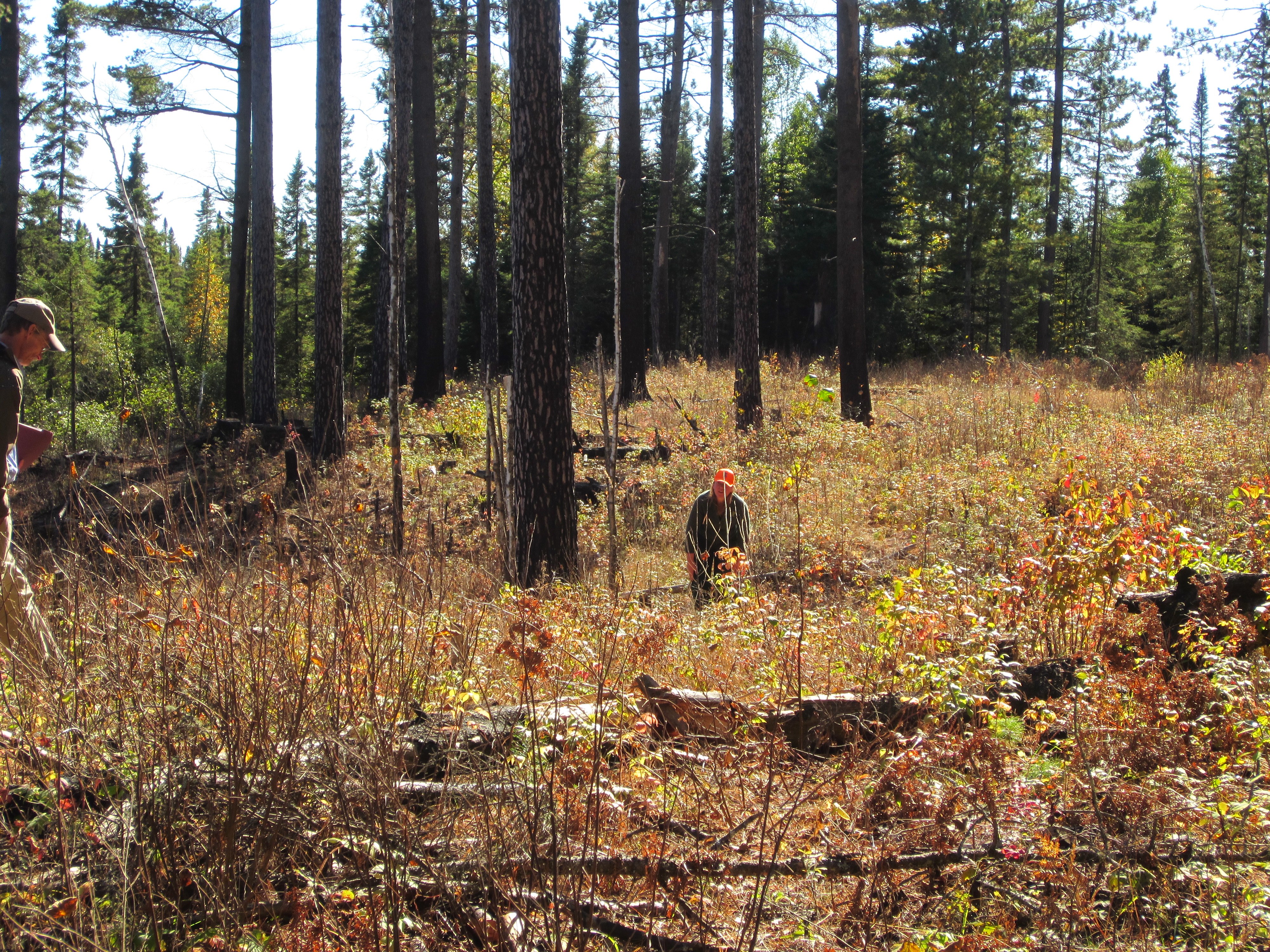Silviculture Objective(s)
To use the shelterwood system to naturally regenerate white and red pine using two site prep methods: prescribed burn and salmon blade.
Pre-treatment stand description and condition
Stand establishment and management history:
Natural pine stand originating after 1928 fire.
Pre-treatment species composition:
Dominated by red and white pine.

Figure 1: White pine shelterwood photo showing stand structure
Pre-treatment forest health issues:
Some white pine blister rust (1-10%) in the stand. Stand had been thinned several times previous to implementation of this treatment, and had also suffered some wind damage.
Silviculture Prescription
First cut shelterwood: Reduce canopy to 53 ft2/ac in 2009. Residual stand dominated by white pine. Conduct site prep using two methods: On the south side of the road, conduct a prescribed burn. On the north side of the road (11 ac), use a salmon blade to expose mineral soil. Regenerate using seed dropped from the shelterwood stand. Release regeneration using Glyphosate in August 2015.

Figure 2: Burned portion of the white pine shelterwood treatment

Figure 3: Burned portion of the white pine shelterwood treatment
What actually happened during the treatment
First-cut shelterwood implemented as planned in 2009. Underburn on south side was conducted in late September 2009. Salmon blade site prep not conducted until 2012 Stocking was good. Glyphosate release in August 2005 was primarily to control hazel on the south side of the road (burned) and both raspberry and hazel on the north side (salmon blade).
Post-treatment assessment
As of September 2015, stocking is acceptable.

Figure 4: Jim Kelley discusses the white pine shelterwood site during the September 2015 Silviculture Library launch
Plans for future treatments
Overstory removal approximately 2024-2029 depending on stocking and seedling condition. Ideally this would be done requiring no more than 25% damage to seedlings, harvested using a carefully implemented herringbone pattern.
Other notes
Treatment was implemented by DNR forester Cory Skerjance, with input from Jim Kelley.
